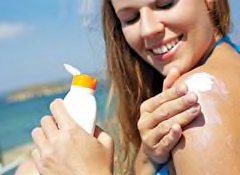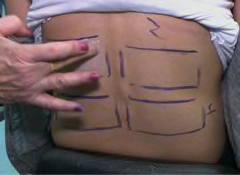Alas, there are no trips to Tahiti for our sunscreen panelists—they go to a lab. A sunscreen's score is based primarily on how well it protects against UVB and UVA radiation. But we look at other factors, too.
UVB protection: In UVB tests, five spots on one rectangular sunscreened area of the panelists' backs are exposed for set times to rays from a sun simulator. After panelists have soaked in a tub of water, five spots in a second rectangular sunscreened area of their back are exposed in the same way. About a day later, the 10 spots are examined for redness. The resulting UVB Ratings reflect each product's actual effectiveness, not how close it came to meeting its SPF claim.
UVA protection: To test for UVA protection, we also use people but check for tanning instead of redness.
Broad-spectrum protection. We use a test based on the Food and Drug Administration's "critical wavelength" test, required for sunscreens that claim broad-spectrum protection. It assesses how well UV rays are absorbed by clear plastic plates treated with sunscreen. All products passed this test.
Staining: To test for staining, we apply each sunscreen to cloth swatches, let those dry, put them through two wash cycles, air-dry them, then check for stains.
Scent and skin feel: Finally, we have our trained sensory panel evaluate the scent and skin feel of the products.
























